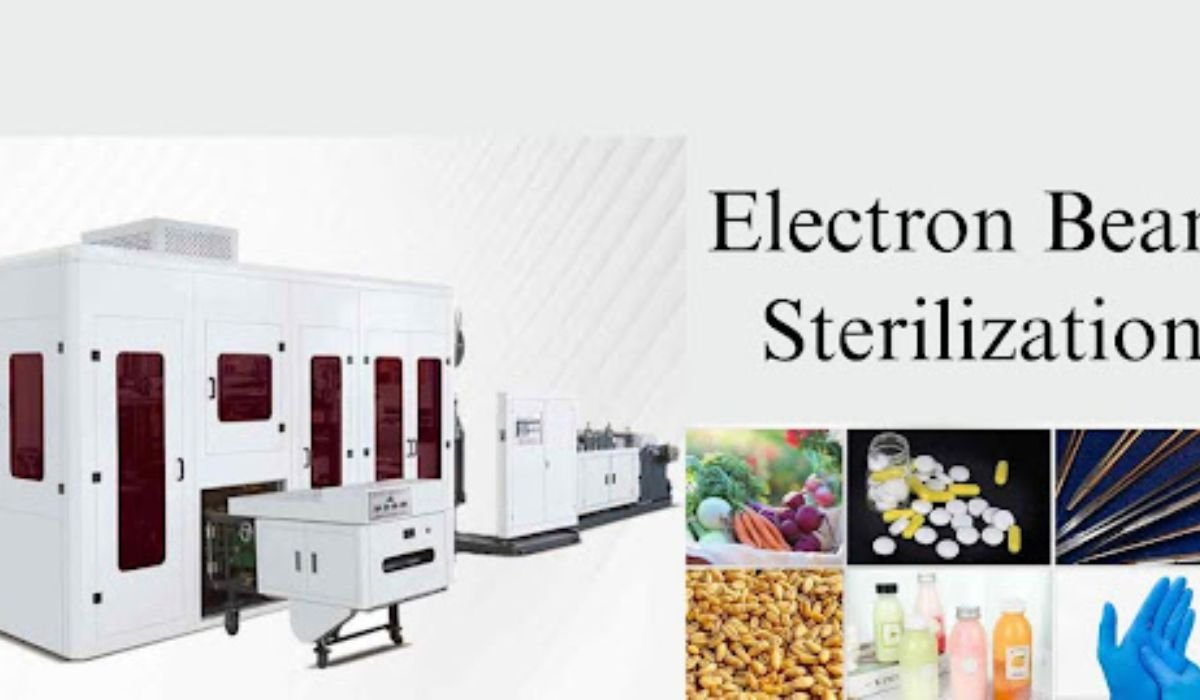In an efficiency-driven, clean-starved, safety-obsessed world, there has ever been greater demand for cutting-edge methods of sterilization. Veteran standbys such as steam, ethylene oxide (EtO), and gamma radiation have all been used by the medical, pharma, and food sectors for many decades. To meet increasingly aggressive demands for faster, cleaner, greener processes, however, one technology is quickly making headlines which is electron beam sterilization.
This new technology is revolutionizing industry sterilization procedures. With lethal high-energy electrons on unwanted microorganisms, electron beam sterilization is introducing a package of advantages over the conventional methods. In this article here, we describe how it works, where and why it is a sterile processing innovation.
Understanding the Basics of Electron Beam Sterilization
Electron beam sterilization or e-beam sterilization is a technology that uses accelerated electrons to inactivate bacteria, viruses, and other disease-causing pathogenic DNA. High-energy electrons from a linear accelerator are directed onto the product to be sterilized. It is simpler to regulate and safer compared to gamma rays that are generated by radioactively charged emitters since e-beam technology is constructed electronically.
This is an ionizing radiation. After the electrons have passed through a product’s surface, they make the cellular structures of bacteria useless, inactivating them. The process is fast, accurate, and can be used on a variety of products such as medical devices, drugs, packaging materials, and even cosmetics.
How the Process Works
The electron beam sterilization is typically mechanized and located in a shielded facility. Products are placed on a conveyor system that moves them through a linear accelerator. During transit, the electron beam sterilizes the product surface and penetration through material, degrading, depending on energy level, internal impurities.
The amount of dose and energy can be regulated based on the type of product and the intensity of sterilization required. This is one of the primary reasons e-beam sterilization is extremely beneficial for diverse applications. The process just requires several seconds for most applications, which is not that sluggish in comparison to other processes.
Principal Advantages Contributing to Its popularity
A few of the benefits of electron beam sterilization are driving its growing application across a wide range of industries:
1. Speed and Efficiency
The largest benefit is the time advantage. Products are sterilized within seconds, saving turnaround time and enhancing the manufacturing process. Extended aeration cycles such as used in the case of EtO sterilization are not required.
2. No Toxic Residues
As no chemical or gas is used in the process, no residue is left on the product. That is particularly valuable in drugs and food, where contamination is a major issue.
3. Environmentally Friendly
There is no waste generated in the reuse waste by electron beam sterilization and is therefore more environmentally friendlier than other processes. No radioactive element or toxic gas must be utilized.
4. Precise and Reproducible
It is a process that can be controlled and repeated with precision in the effort to obtain reproducible outcomes. Its precision has regulation control and quality control with minimal deviation.
5. Heat-Sensitive Material Compatible
It is a low-temperature process and is therefore useful for the sterilization of heat-sensitive materials such as plastics, electronic equipment, and medical equipment.
Applications In Many Industries
The multi-disciplinary nature of electron beam sterilization has found application in several industries:
Healthcare and Medical Devices
Hospital and laboratory applications demand sterilization. Syringes, medical devices, implantable devices, and wound care products are sterilized using e-beam technology without affecting their integrity.
Pharmaceuticals
Sterilization of most drug products and packaging is required. Electron beam sterilization provides sterility without affecting drug formulation, particularly heat-sensitive formulations.
Food and Beverage Packaging
Food packaging needs to be sterile for shelf life and safety. Sterilization by this process is best suited to pre-pack container sterilization, especially in the aseptic process lines.
Cosmetics and Personal Care
Wipes, creams, and most personal care products tend to require effective but not ruthless sterilization. Electron beam sterilization does this without damaging the formula or package.
Electronics and Aerospace
Special purpose application software makes use of the technology to sterilize and decontaminate parts without structurally or functionally degrading them, required in high-technology applications.
Safety and Regulatory Issues
Electron beam sterilization is recognized and endorsed globally by international regulatory agencies like the FDA and ISO. The process is also followed by strict safety controls and certified through exhaustive testing. Risk of operation is considerably minimized as there is no radioactive content involved.
Operators are protected in booths, and equipment is heavy to limit man’s exposure to a very necessary extent. In safety from an occupational perspective, e-beam sterilization is one of the safest ones available nowadays.
Cost and Operational Efficiency
Although initial investment in electron beam technology is costly because of equipment and building expenses, operating costs in the long run are minimized. Process speed and efficiency, lower manpower requirements and handling time, and absence of consumables (i.e., isotopes or gas) translates to recurring savings.
The process is a good investment payoff for businesses with a need for throughput, cost-effectiveness, and longevity.
Limitations to Recall
It does have some positives, but electron beam sterilization does have some limitations:
- Penetration Depth: The electrons lack high penetration power and hence less effective on extremely thick or dense material.
- Line-of-Sight Requirement: The beam will be required to travel directly to the material to be sterilized. Shadowed areas can be robbed of full exposure.
But these are generally overcome by process engineering and product design prudence.
Why Industries Are Moving the Way
As businesses move to quicker, cleaner, and greener production, electron beam sterilization is increasingly desirable. With its mix of safety, speed, and earth-friendliness, it is just the answer for now.
In an international environment wherein product quality, regulatory compliance, and environmental-friendliness are the glamour twenty-four-seven, a sterilization technology that holds its own on all three of these counts is one of the greatest selling points. As the technologically advanced world keeps moving ahead and more and more people take serious orientation towards the environment, it is evident that bigger and bigger organizations will employ this process in their list of drives.
Road Ahead for E-beam Technology
Electron beam sterilization is not a fad, it’s the future of sterile processing. With technology becoming increasingly omnipresent and corporations calling for efficiency, its application in worldwide industries is only increasing. Whether you’re in healthcare, pharma, packaging, or electronics, you’re due to think about how e-beam sterilization can revolutionize your sterilization process and meet your long-term objectives.
The revolution in sterile processing has long been awaited, and leading the charge is electron beam sterilization.
READ ALSO: When to Replace Your Power Bank?











